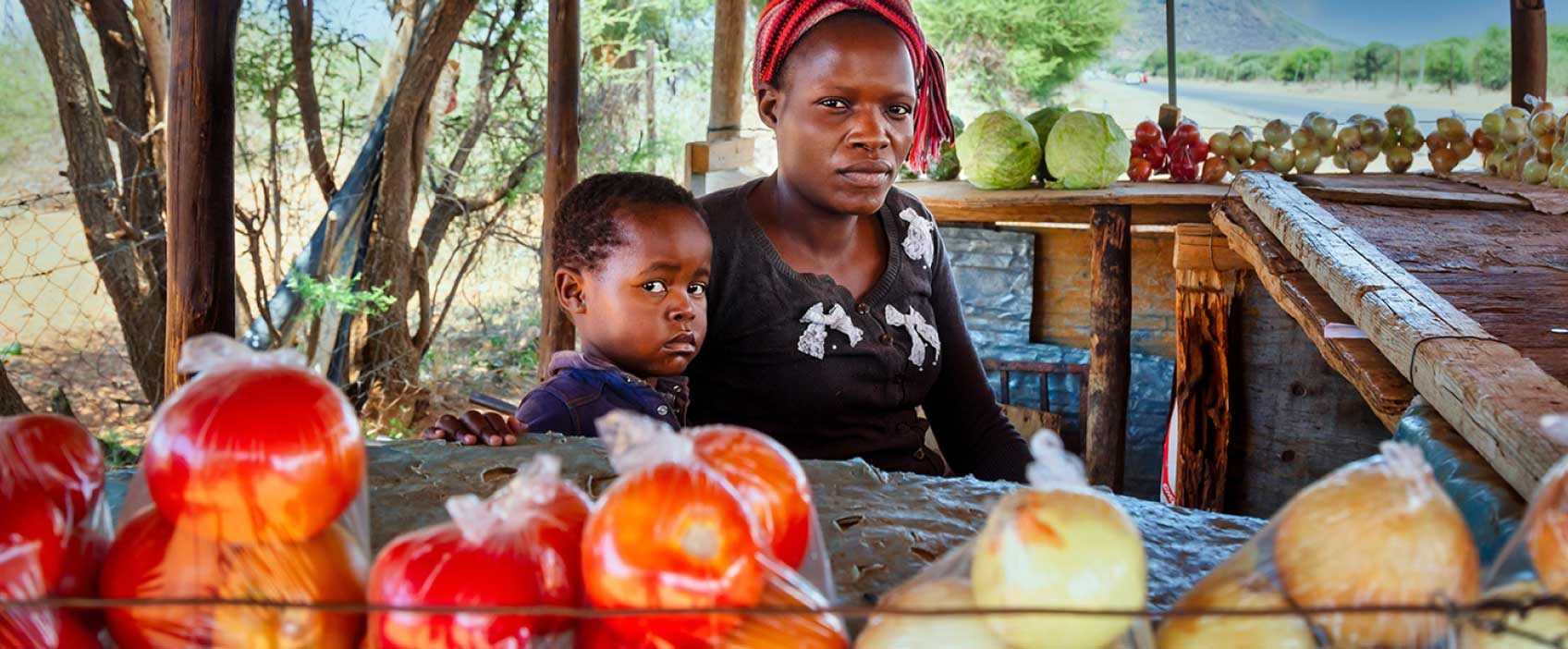
IFPRI Publications: Journal Articles
Explore Our Latest Journal Articles
By Title By Author By Country/Region By Keyword
Journal Article
Men can cook: Effectiveness of a men’s engagement intervention to change attitudes and behaviors in rural Ethiopia
Journal Article
The technopolitics of agronomic knowledge and tropical(izing) vegetables in Brazil
Journal Article
Experimental measures of intra-household resource control
Journal Article
A framework for cost-effectiveness analysis of greenhouse gas mitigation measures in dairy industry with an application to dairy farms in China
Journal Article
Revolutionising multi-sectoral nutrition policy: Insights from the Ethiopian National Information Platform for Nutrition (NiPN) approach
…more
Halala, Yoseph; Zewdu, Frezer; Sinamo, Sisay; Tsegaye, Daniel; Neu, Ingo; Mirsaidova, Manzura; Sarkar, Archana; Tessema, Masresha; Hafebo, Aregash SamuelJournal Article
An approach for assessing whether agricultural projects help smallholders transition to better livelihood strategies: A Malawian case study
Journal Article
Women improving nutrition through self-help groups in India: Does nutrition information help?
Journal Article
Observed trends in multiple breadbasket yield shocks
Journal Article
Toward integrated dam assessment: Evaluating multi-dimensional impacts of the Grand Ethiopian Renaissance Dam on Sudan
Journal Article
Examining the impact of climate change on cereal production in India: Empirical evidence from ARDL modelling approach
Journal Article
Reconciling conservation and development requires enhanced integration and broader aims: A cross- continental assessment of landscape approaches
…more
Meinzen-Dick, Ruth; Milder, Jeff; Quintero, Marcela; Remans, Roseline; Valbuena, Diego; Willement, Louise; Zanzanaini, Camilla; Zhang, WeiJournal Article
Making complementary agricultural resources, technologies, and services more gender-responsive
Journal Article
Diet quality and associations with motivation and ability to consume a healthy diet among adolescents from urban low-income households in Bangladesh
Journal Article
Toilet construction under the Swachh Bharat Mission and infant mortality in India
Journal Article
Spatial typology for food system analysis: Taking stock and setting a research agenda
Journal Article
Economic AI on the move: the relationship between sugar-sweetened beverages consumption and weight gain in Kyrgyzstan
Journal Article
Rising atmospheric carbon dioxide concentrations increase gaps of rice yields between low- and middle-to-high-income countries
…more
Ma, Chuanqi; Yan, Xiaoyuan; Ni, Kang; Wang, Dongming; Wang, Yu; Zhu, ChunwuJournal Article
Irrigation technologies and management and their environmental consequences: Empirical evidence from Ethiopia
Journal Article
Scaling community-based aquaculture for enhanced nutrition and women’s empowerment: lessons from Odisha, India
Journal Article
Individual interventions, collective lessons: Developing mid-range theory on women’s groups to improve health
Journal Article
Beyond the consumer food price index: Measuring the cost of a healthy diet in India
Journal Article
Learning together for groundwater management: A case of the Devnadi Basin, Nashik, Maharashtra, India
Journal Article
The causal effect of early marriage on women’s bargaining power: Evidence from Bangladesh
Journal Article
School meals are evolving: Has the evidence kept up?
Journal Article
The paper of how: Estimating treatment effects using the front-door criterion
Journal Article
Global food value chains and obesity in low- and middle-income countries
Journal Article
From streets to tables: Bottom-up cocreation case studies for healthier food environments in Vietnam and Nigeria
…more
Brouwer, Inge D.; Béné, ChristopheJournal Article
Emerging outsource agricultural services enable farmer adaptation in agrifood value chains: A product cycle perspective
Journal Article
Educational impacts of an unconditional cash transfer program in Mali
Journal Article
Sustained underweight in rural areas and emergence of overweight in urban Ethiopian women: A multivariate analysis of EDHS data 2000–2016
Journal Article
Geospatial variation in dietary patterns and their association with heart disease in Bangladeshi population: Evidence from a nationwide survey
Journal Article
Understanding differential reductions in undernutrition among districts in Rwanda through the perspectives of mid‐level and community actors on policy commitment and policy coherence
Journal Article
Effects of a large-scale alcohol ban on population-level alcohol intake, weight, blood pressure, blood glucose, and domestic violence in India: A quasi-experimental population-based study
Journal Article
Predictors of prediabetes/diabetes and hypertension in Ethiopia: Reanalysis of the 2015 NCD STEPS survey using causal path diagrams
Journal Article
Drivers of change in weight-for-height among children under 5 years of age in Ethiopia: Risk factors and data gaps to identify risk factors
Journal Article
Child growth faltering dynamics in food insecure districts in rural Ethiopia
Journal Article
The relationships between optimal infant feeding practices and child development and attained height at age 2 years and 6–7 years
Journal Article
Understanding delays in the introduction of complementary foods in rural Ethiopia
Journal Article
It’s all in the stars: The Chinese zodiac and the effects of parental investments on offspring’s cognitive and noncognitive skill development
Journal Article
The impact of large-scale agricultural investments in low-income economies
Journal Article
Civil conflict, cash transfers, and child nutrition in Yemen
Journal Article
Estimating the cost and affordability of healthy diets: How much do methods matter?
Journal Article
The demographic transition and rural industrialization in China
Journal Article
Low Global Diet Quality Score (GDQS) among adolescents in Vietnam is due to inadequate consumption of fruits and vegetables rather than high consumption of unhealthy foods
…more
de Brauw, Alan; Ruel, Marie T.; Leroy, Jef L.Journal Article
A multi-sectoral community development intervention has a positive impact on diet quality and growth in school-age children in rural Nepal
Journal Article
Bioaccessibility and bioavailability of biofortified food and food products: Current evidence
…more
Mehta, SaurabhJournal Article
Progress in Water, Sanitation and Hygiene (WASH) coverage and potential contribution to the decline in diarrhea and stunting in Ethiopia
Journal Article
Utilization of Integrated Child Development Services (ICDS) and its linkages with undernutrition in India
…more
Puri, Parul; Chakrabarti, SumanJournal Article
The impact of excluding adverse neonatal outcomes on the creation of gestational weight gain charts among women from low- and middle-income countries with normal and overweight BMI
Journal Article
We need to know the economic impacts of Sudan’s ongoing conflict
Journal Article
Food systems interventions for nutrition: Lessons from 6 program evaluations in Africa and South Asia
…more
Nakasone, Eduardo; Dhillon, Christina Nyhus; Prescott, Dave; Smith, Matt; Tschirley, DavidJournal Article
Feed handling practices, aflatoxin awareness and children’s milk consumption in the Sidama region of southern Ethiopia
Journal Article
Feasibility of using an artificial intelligence-based telephone application for dietary assessment and nudging to improve the quality of food choices of female adolescents in Vietnam: Evidence from a randomized pilot study
…more
McCloskey, Peter; Palloni, Giordano; Tran, Trang Huyen Thi; Trơưng, Duong Thuy Thi; Hughes, David; Gelli, AuloJournal Article
Women’s leadership in climate-resilient agrifood systems: Defining a future research agenda
Journal Article
Harnessing the job creation capacity of young rural agripreneurs: A quasi-experimental study of the ENABLE program in Africa
Journal Article
Food systems interventions for nutrition: Lessons from six program evaluations in Africa and South Asia
…more
Nakasone, Eduardo; Dhillon, Christina Nyhus; Prescott, Dave; Smith, Matt; Tschirley, DavidJournal Article
Navigating One Health in research-for-development: Reflections on the design and implementation of the CGIAR Initiative on One Health
Journal Article
Food and nutrition security under changing climate and socioeconomic conditions
Journal Article
Harnessing digital innovations for climate action and market access: Opportunities and constraints in the CWANA region
Journal Article
Soil fertility in mixed crop-livestock farming systems of Punjab, Pakistan: The role of institutional factors and sustainable land management practices
Journal Article
African domestic supply booms in value chains of fruits, vegetables, and animal products fueled by spontaneous clusters of SMEs
Journal Article
Adapting fiscal strategies to energy and food price shocks in Portugal
Journal Article
Unpacking India’s fiscal responses to COVID-19: A computable general equilibrium modelling analysis
Journal Article
COVID-19 and dynamics of food insecurity in eastern India: Evidence from analysis of a panel survey
Journal Article
Revisiting development strategy under climate uncertainty: Case study of Malawi
Journal Article
Combining approaches for systemic behaviour change in groundwater governance
Journal Article
Burden of disease scenarios for 204 countries and territories, 2022–2050: A forecasting analysis for the Global Burden of Disease Study 2021
Journal Article
Farmer perceptions, knowledge, and management of fall armyworm in maize production in Uganda
Journal Article
Perceptions towards management of acute malnutrition by community health volunteers in northern Kenya
…more
Cuellar, Pilar Charle; Keane, Emily; Schofield, Lilly; Njiru, James; Chabi, Martin; Maina, Lucy Gathigi; Okoth, Peter F.; Raburu, Judith; Gichohi, Grace; Mutua, Alex; Matanda, Charles; Kimani-Murage, ElizabethJournal Article
Famine in Gaza, questions for research and preventive action
Journal Article
Evidence of potential impacts of a nutrition-sensitive agroecology program in Andhra Pradesh, India, on dietary diversity, nutritional status, and child development
…more
Jaacks, Lindsay M.Journal Article
Impact of India’s Farm Science Centers (Krishi Vigyan Kendras) on farm households’ economic welfare: An evidence from a national farmer survey
Journal Article
Soil quality evaluation for irrigated agroecological zones of Punjab, Pakistan: The Luenberger indicator approach
Journal Article
What I say depends on how you ask: Experimental evidence of the effect of framing on the measurement of attitudes
Journal Article
Enhancing agency and empowerment in agricultural development projects: A synthesis of mixed methods impact evaluations from the Gender, Agriculture, and Assets Project, Phase 2 (GAAP2)
…more
Myers, Emily; GAAP2 for pro-WEAI Study TeamJournal Article
Gender bias in customer perceptions: The case of agro-input dealers in Uganda
Journal Article
Increasing production diversity and diet quality: Evidence from Bangladesh
Journal Article
Book review: Matias E. Margulis, Shadow negotiators: How UN organizations shape the rules of world trade for food security Stanford University Press, 2023
Journal Article
Social protection amid a crisis: New evidence from South Africa’s Older Person’s Grant
Journal Article
Sweetened beverage tax implementation and change in Body Mass Index among children in Seattle
…more
Saelens, Brian E.Journal Article
Study protocol to assess aflatoxin M1 health risks versus benefits of dairy consumption in Ethiopian children: An epidemiological trial and risk-benefit analysis
Journal Article
Rural household vulnerability and COVID-19: Evidence from India
Journal Article
Land as a binding constraint to cluster-based development in Ethiopia: To cluster or not to cluster?
Journal Article
Consumer food safety awareness and demand for fluid milk: A case study from India
Journal Article
Dynamics of comparative advantage in India’s agricultural exports
Journal Article
Pandemic experiences and the post-lockdown economic recovery: Evidence from China
Journal Article
Predicting climate smart agriculture (CSA) practices using machine learning: A prime exploratory survey
Journal Article
Cash transfers and women’s agency: Evidence from Pakistan’s BISP program
Journal Article
Does relative deprivation condition the effects of social protection programs on political support? Experimental evidence from Pakistan
Journal Article
Impact of dairy cooperatives on milk productivity: Evidence from rural Bihar
Journal Article
Farmers’ willingness to pay for smart farming technologies: Evidence from a smart drip irrigation technology in North China
Journal Article
Missing Black males among preterm births in the US, 1995 to 2019
Journal Article
Addressing gender inequalities and strengthening women’s agency to create more climate-resilient and sustainable food systems
Journal Article
Spatiotemporal expansion and methane emissions of rice-crayfish farming systems in Jianghan Plain, China
Journal Article
An algorithm to assess calcium bioavailability from foods
Journal Article
Reduce, reuse, redeem: Deposit-refund recycling programs in the presence of alternatives
Journal Article
The importance and determinants of purchases in rural food consumption in Africa: implications for food security strategies
Journal Article
Uncovering the gap: Assessing the compliance of the Canadian food availability with dietary recommendations and its impact on the environment
Journal Article
Prevalence, trends, and inequality in noncommunicable diseases in Bangladesh: Evidence from Bangladesh Demographic and Health Surveys 2011 and 2017–2018
Journal Article



